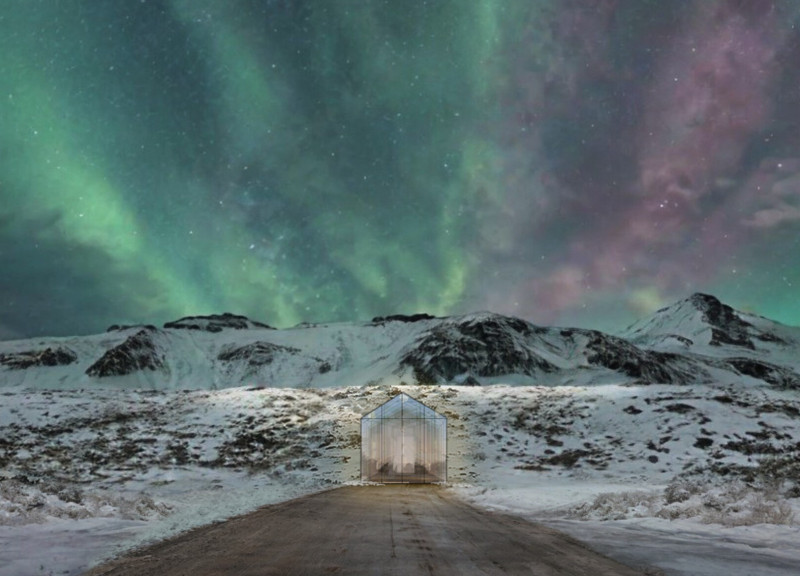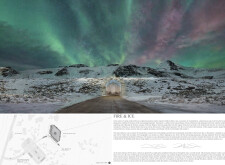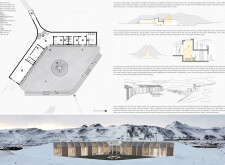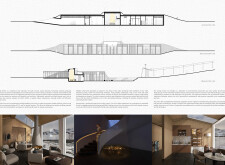5 key facts about this project
## Overview
Located within the Krafla Caldera in Iceland, the design concept known as *Fire & Ice* seeks to create a contemplative sanctuary that harmonizes with the surrounding mountainous landscape. The intent is to establish a deep connection between the architecture and the natural features of the environment, reflecting the dualities of the Icelandic landscape—specifically the interplay between geothermal activity and glacial formations. This architectural proposal aims not only to enhance the site's beauty but also to embody principles of sustainability and environmental respect.
## Spatial Experience
The spatial organization of the structure guides visitors through an immersive experience, emphasizing the natural phenomena characteristic of the region. A key feature is the observatory designed for viewing the Northern Lights, fostering a connection between the architecture and the celestial environment. The design actively frames views of the Krafla mountains, encouraging visitor interaction with the landscape. The entrance features a glass facade that contrasts light and shadow, creating a welcoming transition from the exterior to the warmth of the interior. Within, a range of spaces—including an observatory deck and storytelling areas—promote cultural exchange and community engagement.
## Material Selection
The project employs a thoughtful selection of materials that draw from local geological resources, underscoring both aesthetic and ecological considerations. Cross-Laminated Timber (CLT) serves as the primary structural element, optimizing strength while minimizing carbon footprint. Volcanic stone, sourced locally, enhances thermal insulation and durability against harsh weather conditions. The steel roofing is designed for resilience and reflects natural light, while large glass walls maximize visibility and solar control. Outdoor promenades feature volcanic stone pavement, adding local relevance and sustainability to the landscape. Energy efficiency is prioritized through geothermal heating and rainwater harvesting, minimizing environmental impact and reinforcing ecological integrity in alignment with the region’s natural resources.






















































